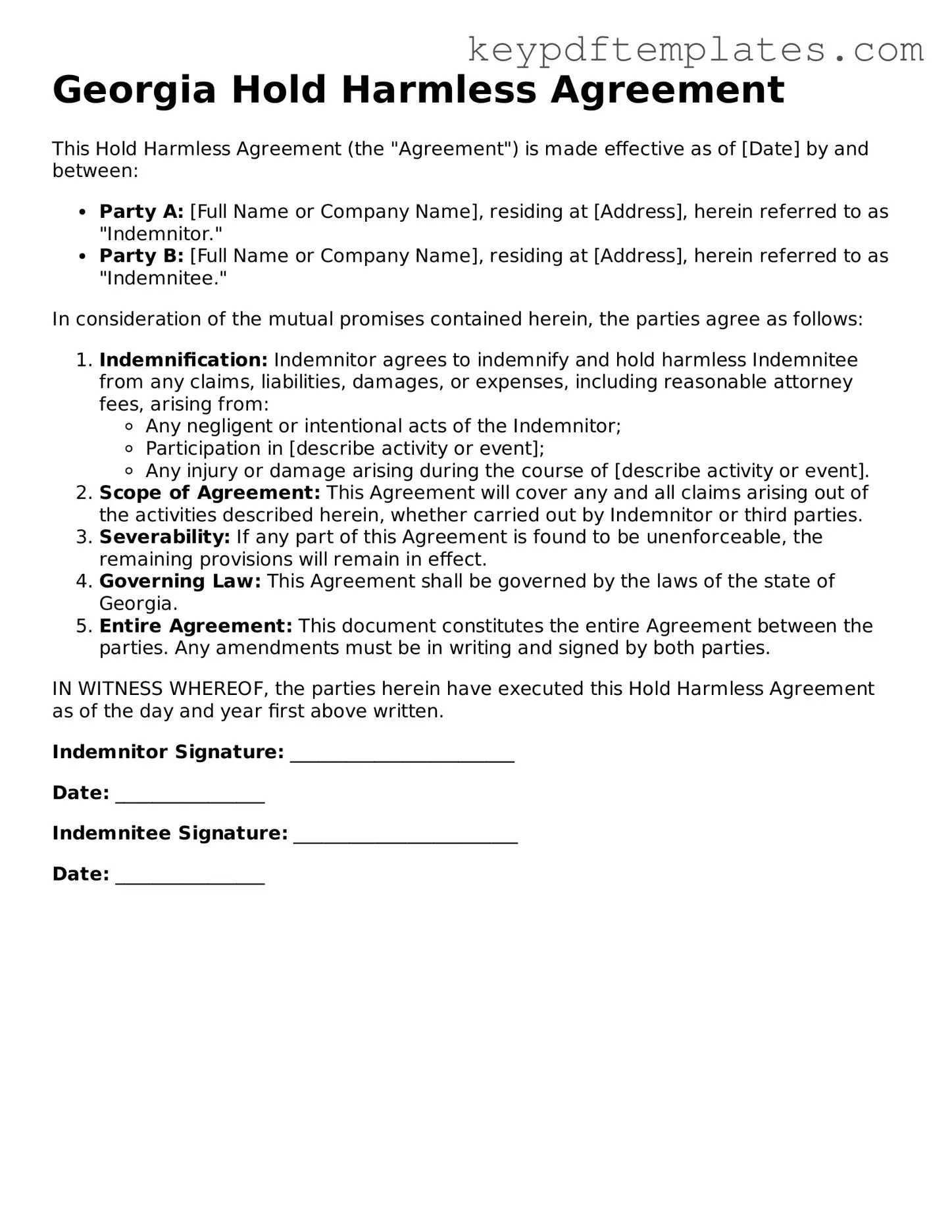Legal Hold Harmless Agreement Document for the State of Georgia
A Georgia Hold Harmless Agreement is a legal document designed to protect one party from liability for damages or injuries that may occur during a specific event or activity. This agreement is often used in various situations, such as construction projects or rental agreements, to ensure that one party does not hold the other responsible for unforeseen incidents. Understanding the terms and implications of this form can provide peace of mind and clarity for all parties involved.
Modify Document Online
